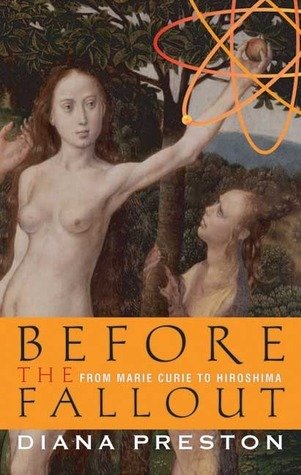Before the Fallout: From Marie Curie to Hiroshima by Diana Preston
Review of Before the Fallout: From Marie Curie to Hiroshima by Diana Preston
Before the Fallout by Diana Preston (2005). Published by Walker & Company.
Ironically, I started reading this book when the entire Ukraine is invaded by Russia scenario initially began to unfold and people were like “don’t joke about World War III people are dying.” Found that one massively disrespectful because I clearly remember at the beginning of 2020 when people were making World War III jokes about Iran.
Anyways, I came upon a copy of this book when I was rustling through my local Savers, then decided it was time to read about the history of nuclear weapons. Maybe it was not the best time to read about it because of the invasion, but, at the same time, it was kind of comforting because I felt like the book was very clear about the trajectory of how these weapons were feared to be used for mass destructions.
This is a rather straightforward intro, so let’s get straight into it.
Published in 2005, Before the Fallout details the lives of the atomic scientists involved with creating nuclear weapons.
Before we have the modern day weapons, we simply have a bunch of people in a lab trying to figure some things out about how the world works. That’s where this book begins, and although it was published in 2005 and before the nuclear scares began up again, it’s pretty informative about the origins of nuclear weapons. A large chunk of the focus is on the scientists themselves, a chunk of who were Jewish in German-occupied territory.
We begin with Marie and Pierre Curie, who, essentially, devoted and sacrificed their lives for discovering and researching radioactive materials. They were working in France in the early 1900s, and Curie’s invention was even used in World War I through X-ray machines looking at the soldier’s wounds.
The book outlines what the Curies researched and did, then passes on the torch to their daughter and her husband, who were then next big things in the French research world.
They, too, began to sacrifice their lives for the cause—all of the Curies mentioned here, minus Pierre, would succumb to the effects of radiation exposure. Since they were beginning the initial research on the compounds, they had no idea you shouldn’t be touching it or actively expose your bare skin to it.
What happens after Marie and Pierre discover radium is a blur, because not even fifty years later, an atomic bomb goes out and wipes the cities of Nagasaki and Hiroshima off of the map.
What happens immediately after the Curie’s discovery are the interconnected webs of scientists all over the world. Germany and France were key centers of research at the time, and so a lot of the scientists who were key figures knew each other. Whether they were from Japan or Denmark, Jewish or Christian, many of them worked together until the throes of war separated everything.
Then the United States joined the race, becoming the surprising outlier that would create the bomb in time to quote-on-quote end the war. As Preston outlines here, the United States was able to get ahead because they unlocked a surprising secret that was obviously laying before the other countries team’s eyes, thus allowing them the opening they needed. A lot of the Jewish scientists, as well, defected to the United States and that made an explicit difference.
Preston’s writing is clear and succinct throughout the book, making difficult topics fairly easy to understand even for an amateur scientist.
I liked that the focus was on the scientists largely than the weapon-making itself, as it humanized them a lot. Many of them supported their Jewish colleagues despite being German, and others helped use the network to try and help other scientists to escape from the horrors going on in Europe at the time.
And, at the same time, many scientists were against using the atomic bomb as a weapon of war, which they slowly began to realize how devastating they were the deeper into the research they got.
Overall Thoughts
I think this is a good primer book if you want something digestible about the topic. I didn’t know much about it beforehand, but I feel comfortable knowing the overarching details to try and dive deeper into a harder book, like the Rhodes one about the nuclear energy race.
I don’t think I’d buy a copy of this book, however, but I can see how someone who might be interested in these subjects may want a copy.
If you were to buy one, I suggest looking into your local thrift store—I’ve seen copies of this book about three times now, not just in that Savers. Otherwise, the library is always an option!
